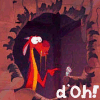
I downloaded Scrivener for the PC a few months back, but I never used it religiously until last week. Now, I realize that some other authors may feel that this is software with too many bells and whistles is a way to provide meaningful distractions from the act of getting one’s butt in the chair and proceeding a-pace. ***warning, proceeding a-pace is my new favorite phrase*** After all, there’s only so much outlining, worldbuilding, character development, and scene mapping one can do before the words flow. (Like spice, only faster and less blue-eye turning.)
Sure, the planning portion of a project can be another timesuck (a word coined by the incomparable Lili Saint Crow, might I add) in addition to all the other timesucks out there caused (in no short order) by shiny objects, demanding cats, for sale signs, plague-carrying squirrels, online friends, and Angry Birds. What I’ve also found, is that if you’re multi-tasking and using the same computer for a myriad of other work-related activities, that it’s harder to separate pay-the-bills work from working on spec.
I was trying to figure out what my novel hang-up was, and I knew it had something to do with spending weeks (if not months) on a manuscript that may never sell. THIS HURTS THE FREELANCER’S BRAIN. In a freelancing situation you get paid, sometimes before the work is done, other times half up front or whatever the case may be. Mentally, this is batshit of course, because in order to be a novelist, the only way forward is to get the story out NO MATTER WHAT. Fire, snakes on a plane, floods, biblical-level apocalypses — butt plus chair and writing utensil of some sort is the only way to get that story down, then revised, and finally submitted.
So what’s the solution? Well, I told you I changed the layout of my office and this has, indeed, had a positive impact. I’m also building in two days at the library with no internet, to reserve e-mail in the morning and at night, in order to have solid work chunk times outside of my house. What this came down to for me, was a change in perspective.
That’s what Scrivener provided for me. I often use this trick when I’m revising: I change the font or the spacing to ensure that I can approach something with fresh eyes. Now, though, I applied the same technique when I was writing. And lo! and behold! Two hours and 2,500 words (on average) later?
Now, I have a ton of theories as to why this is, and namely it’s because when I write for RPGs, or pen short stories, or draft non-fiction articles I’m always using Microsoft Word. It’s often instinctive, I automatically look for pagination, line breaks, word count, and the like. The screen is familiar to me as it has been for so, so, so many years. By changing the software I use, specifically for long form works like novellas and novels, I am infusing something new visually and viscerally to the work. I am saying that “When I use this piece of software, I am serious about spending my time on this manuscript.”
Likely, I don’t use the software like everyone else does. Outlines? Screw it. I start with a one-page pitch document which includes a logline, a generic synopsis, and my other notes. I must know the beginning, the middle (or key milestones) and the end. Then, I can dive in and write the whole damn thing. Revisions will allow me to break up scenes and smooth out the finer details in chapter-by-chapter (or scene-by-scene) form. One novella’s already plotted and I’m having so much fun I’m writing out of order again. Hey, no one said a novel had to be written linearly from beginning to end, did they? If I’m bored with a scene, that’s what Scrivener allows me to do, I can always jump back and keep going.
And proceed a-pace I shall. Oh, I definitely shall.
- Mood: It’s Monday. Why do you ask?
Caffeinated Beverages Consumed: Not ‘fessing up today. Screw it.
Work-Out Minutes Logged Yesterday: Some form of physical activity which did not involve contortionism.
In My Ears: Americano by Lady GaGa
Game Last Played: Tetris
Movie Last Viewed: The Raven
Latest Artistic Project: In progress!
Latest Release: “Fangs and Formaldehyde” from the New Hero anthology through Stone Skin Press



Comments are closed.